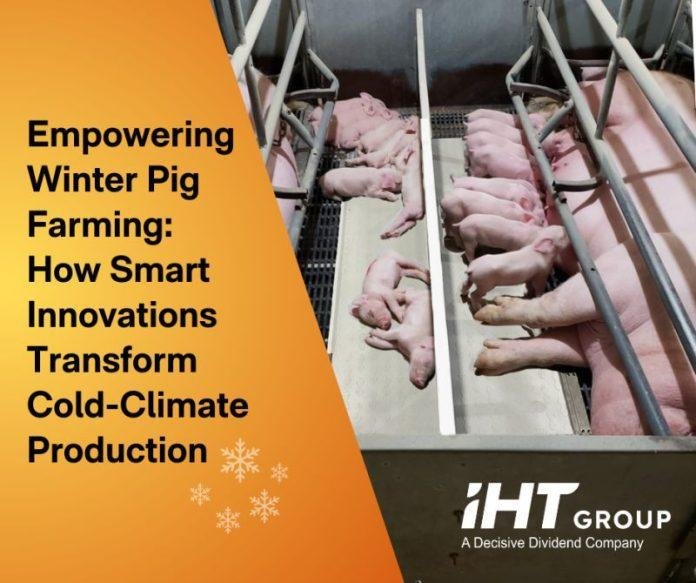U.S. hog production traverses a complex landscape in 2025, buffeted by evolving domestic consumption patterns and shifting global market currents. Conventional wisdom would suggest that with burgeoning export opportunities and robust domestic appetite for pork, overall supply might register a measurable uptick over prior years. That’s not quite the case everywhere.
Over recent months, the industry has navigated contradictory signals emanating from both inventory reports and broader economic trends. According to USDA projections released this spring, total U.S. hog production for 2025 is now forecast at approximately 28.1 billion pounds—representing a reduction of about 1.2% versus earlier expectations set only weeks before; downward inventories played an outsized role in this recalibration despite heavier average carcass weights inching numbers marginally higher than they otherwise would have fallen.
While there are whispers within agricultural circles suggesting lower feed costs might stimulate additional weight gain among existing herds throughout the next quarters, those incremental increases probably won’t fully counterbalance what is a tangible decline in overall animal numbers entered into slaughter channels since late last year. In fact, as operators across more than four thousand surveyed farms recently corroborated, March inventory figures trailed not just last year’s levels but also pre-report estimates from most market analysts—a sign that whatever new demand emerges may face supply-side constraints rarely observed at this scale.
Interestingly enough (and perhaps unexpectedly), first quarter federally-inspected pork output came in around 6.9 billion pounds—2% less than during the same interval of 2024—a scenario wherein heavier average dressed weights offset only part of lower headcount effects rather than fully neutralizing them as some had forecasted with optimism earlier on.
Nowhere are these dynamics more noticeable than at the intersection of local demand enthusiasm and international trade uncertainty: yes, growing export environments pushed live-equivalent prices for lean hogs up temporarily; February’s figures saw averages exceeding $63 per hundredweight for certain classes—and yet projections harmonize around only modest overall price support through year’s end because production itself remains capped by underlying fundamentals.
For producers considering expansion based solely on an assumption of gangbusters growth overseas: caution may be prudent here too given export forecasts now call for a small contraction—about two percent below previous annual tallies—as softer-than-anticipated uptake across key Asian markets constrains outbound shipments just as North American consumers begin reaching their own capacity limits or adjust preferences amid macroeconomic pressure points.
To further complicate matters—not all regional data conforms neatly to national narratives either; certain states reported above-average pig-saving efficiencies (an all-time record was set with over eleven-and-a-half pigs per litter), while simultaneously running into tighter regulatory or processing bottlenecks that stymied throughput efficiency improvements elsewhere along the value chain despite technological advancements intended precisely for such contingencies! One cannot conclude straightforwardly there’ll be increased profit margins sectorwide even when productivity settings improve locally since price volatility abounds season-to-season—a reality underscored by several midwestern packers who saw strong spot prices give way quickly once international buyers revised their orders downward amid currency fluctuations almost nobody anticipated back during winter contract negotiations.
Nevertheless it mustn’t go unmentioned: world pork production will achieve slight growth globally (~0.2%), mostly outside North America where input cost structures remained relatively stable or outright improved compared to recent spikes seen domestically following drought-impacted grain harvests earlier this cycle—but those global increases will not directly buoy U.S.-based output over twelve month intervals unless unexpected late-year revisions occur due to unforeseen political developments or sudden changes in consumer sentiment neither readily predictable nor reliably incorporated into baseline forecasts made today prior to summer grilling season peaking.
Woven throughout all these quantitative shifts linger qualitative factors impossible entirely to model: rapidly-evolving consumer tastes (sometimes oscillating wildly toward alternative proteins before reverting again), sporadic disease outbreaks cutting capacity unexpectedly then receding just as swiftly after containment efforts succeed beyond best-case projections, old infrastructure being replaced piecemeal instead of systemically leading occasionally to mismatches between finishing barns’ readiness versus processing plants’ scheduled maintenance turnarounds…all complicated further by periodic labor disputes challenging assumptions about steady-state operations even under optimal market conditions where every variable could otherwise be considered favorably positioned!
As an aside—inexplicably—the expectation persists among some commentators that global exports won’t diminish while world output rises minutely; yet USDA’s own latest summaries clearly indicate worldwide pork exports should contract fractionally thanks mostly to muted Asian import volumes coinciding exactly with static-to-reduced worldwide herd sizes except China where small expansions mitigate sagging performance elsewhere primarily via technology-driven productivity improvements rather than absolute animal number escalation—which seems counterintuitive but remains borne out empirically thus far!
In summation? For stakeholders speculating whether surging domestic interest paired with outward-looking sales channels will catalyze notable growth—it appears unlikely U.S. hog output will increase substantially through year’s close despite intermittent upward pressures; if anything current evidence portends steadiness shot through occasionally with volatility clusters triggered more often by externalities (trade policy resets? surprise weather events?) rather than any fundamental acceleration driven purely by aggregated demand vectors alone: careful navigation required indeed!

